My favorite memories of the holiday season we’re going down to Boston and celebrating the Chinese New Year traditionally referred to as the “Spring Festival”. The Chinese New Year is a large celebration in the streets of Chinatown composed of traditional Chinese festivities. This year, the celebration will be on February 1, 2022.
The most exposure to traditional Chinese culture is through Chinese Cuisine. From there, you may know the importance of the Chinese Zodiacs. They represent the 12 year cycle of the Chinese horoscope.
2022 is the year of the Tiger. The Tiger’s personality is unpredictable, competitive, brave and confident. They are charming people who are well-liked by others and have good luck when it comes to money. This animal symbolizes strength and bravery that wards off evil.
Find yours to compare your own personality, click this link.
Symbolic Decorations
Every decoration you will see in Boston’s Chinatown is almost like a token of good luck. For instance, beautiful red lanterns will be strung throughout the streets or in front of shops and restaurants. They are known to drive off bad luck. They are also used at night during the Lantern Festival, which mark the end of all festivities.
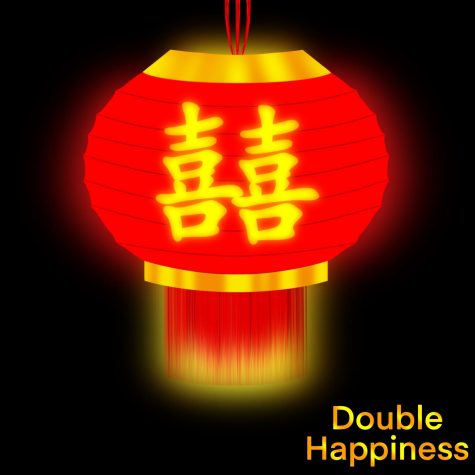
Couplets are long strips of red paper with phrases wishing you good luck for the new year or even beautiful poems, always written in brush calligraphy. Since Chinese characters are written in a vertical form, couplets fit perfectly against door frames. Even numbers are also a sign of good luck, so couplets will usually be showcased in pairs, and therefore be placed on both sides of a door frame. Couplets are left up throughout the entire year and are renewed on New Years.
There is never too much luck to be given. As such, there are several other traditional decorations to help spread luck throughout.. An example of another lucky Chinese decoration are the well known red paper cuttings. These decorations are red pieces of paper cut out into intricate designs, which are then adhered to windows.
There are many different styles of red paper cuttings to make or buy. Normally, there is a single Chinese character added to the design. A common character to have displayed is “fú”, meaning luck. The character can be displayed upside down, changing the meaning to “pouring out luck” to those who read it.. The word is surrounded by a design of an animal or plant expressing what one wishes for in the new year.
A few examples of these symbolic designs are the pomegranate, which stands for fertility, the pine tree for eternal youth, peach for longevity, or the mandarin duck standing for love.
Dancing Dragons and Lions
In the streets of Chinatown, I distinctly remember the loud drumming of the Dragon Dance. The Chinese dragon is the most distinct animal associated with China. Dragons stand for wealth, wisdom, power and they bring good luck. This traditional dance you would see in Boston is a harmony of nine to fifteen dancers leaning under a long costume with a large head heavily decorated in fur details and metallic ornaments. With functioning eyelids and mouths, they will interact with the crowds, handing out red envelopes filled with money to children. The dancers are professionals trained to do tricks making the dragon look like it is standing up and able to interact with other dragons as they zigzag throughout the streets. This parade of dragons is meant to scare off evil spirits.
While the Dragon Dance is performed, the Lion Dance is also simultaneously performed. Performers are decorated just as exceptionally as the dragons, however, they only have two dancers under the costume, as opposed to the Lion dance which would have four performers, one for each leg. Lions will arrive at restaurant doors as they parade down the street. The restaurant owners throw lettuce and oranges into the lion’s mouth which will be ultimately ripped and thrown apart onto the street. This playful act expresses the lion’s symbolism which is joy, happiness and bringing good fortune to businesses.
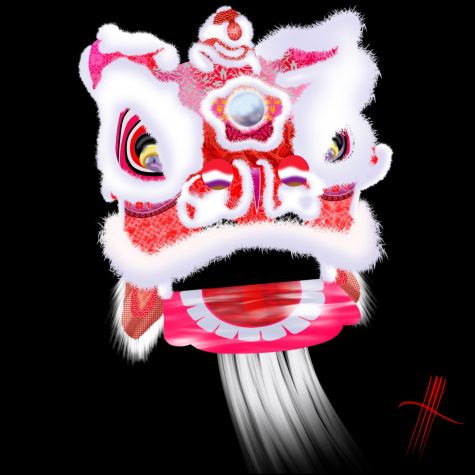
Each “animal” is followed by a band of drums, symbols, and gongs, marching along, keeping a tempo for the dancers to follow.
Red Envelopes
I mentioned “red envelopes” in previous paragraphs. Red envelopes are handed out by family members, friends, and in this case, Dragons on the streets of Chinatown. It is good luck to receive a red envelope and the money inside varies depending on who you are giving it to. The amount depends on the hierarchy of the relationship. Parents and grandparents are given the most money and distant friends or acquaintances are given the least.
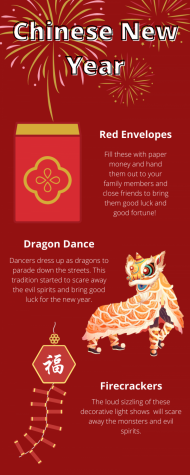
There is also a standard for what is put in these envelopes. For example, there is never an amount of money with a ‘four’ in it. This is because ‘four’ in Chinese also sounds like ‘death’. However eight is a number which will give good luck and prosperity, so it is common that the amount you give or receive will have an eight in it. These are not only exchanged during New Years, they are essentially handed out on any special occasion.
Scare Away the Monsters
The loud rumble of Chinatown is intimidating. The beating drums shake your lungs, and the clashing symbols echo throughout the streets. Don’t even mention the firecrackers. These sounds are all meant to scare off bad luck and monsters.
Every time I went to the New Years celebrations, vendors would sell these mini firecrackers in small red boxes called “snaps”.
Each firecracker is wrapped in a white paper the size of an M&M. Those who purchase the firecrackers throw them on the ground as you walk and they make a loud crack as the contents burn up from the friction. There are also larger firecrackers, covered in red paper and they hang from red lanterns or strings. When lit, they send off sparks on both sides of the lantern. The tradition of these explosives had been to intentionally make as much noise as possible, scaring off the evil spirits. Firecrackers have been banned during festivities in Boston and in some cities in China because of pollution and their hazardous sparks.
Four year old me, walking the streets of Chinatown, with a sesame seed red bean bun in one hand and a red envelope in the other. Mesmerized by the dragons dancing through the streets and watching the lions throw cabbages and oranges through the air, these are my favorite memories from my childhood. Chinese New Year is truly an amazing celebration that I love to share with everyone else.
新年快乐 (Happy New Year).


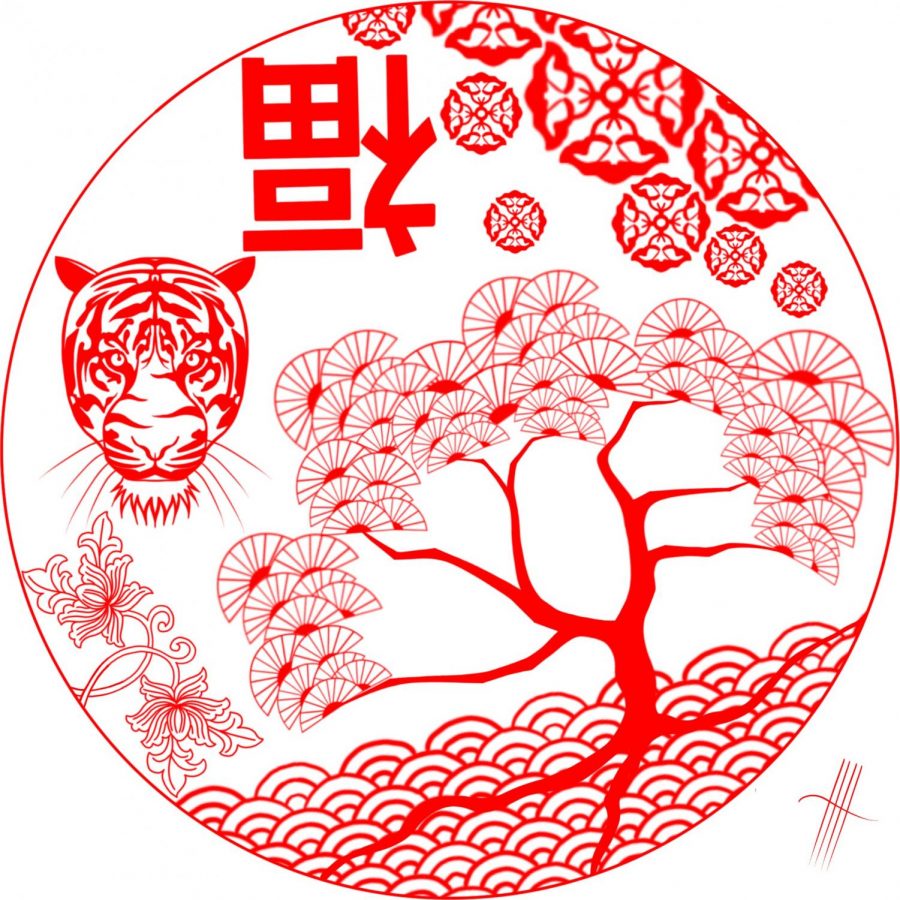



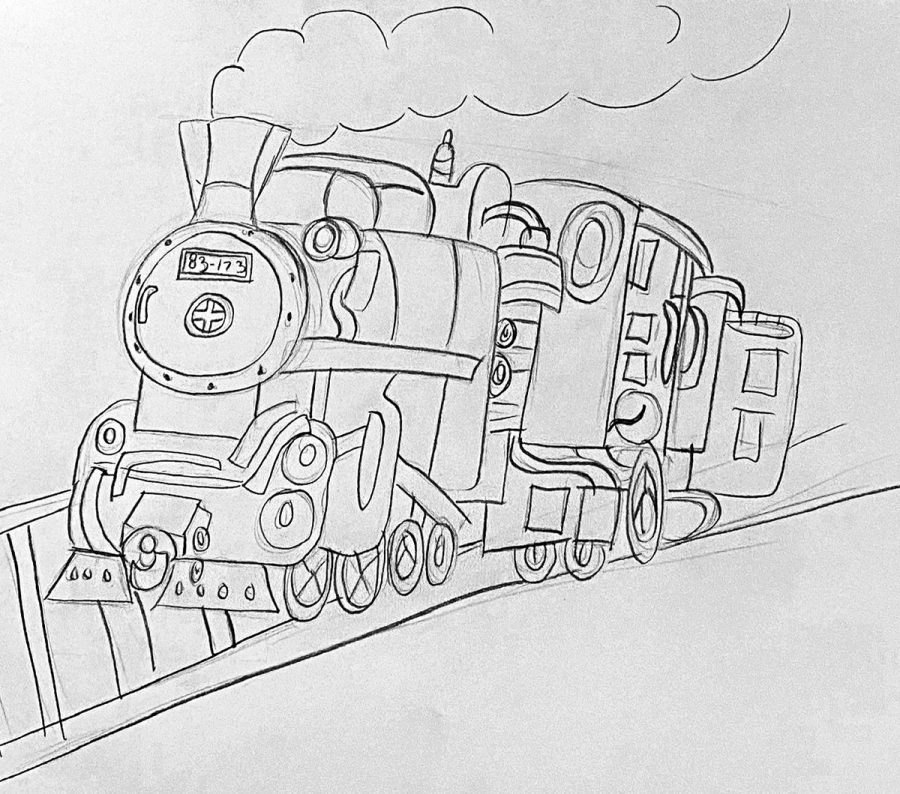
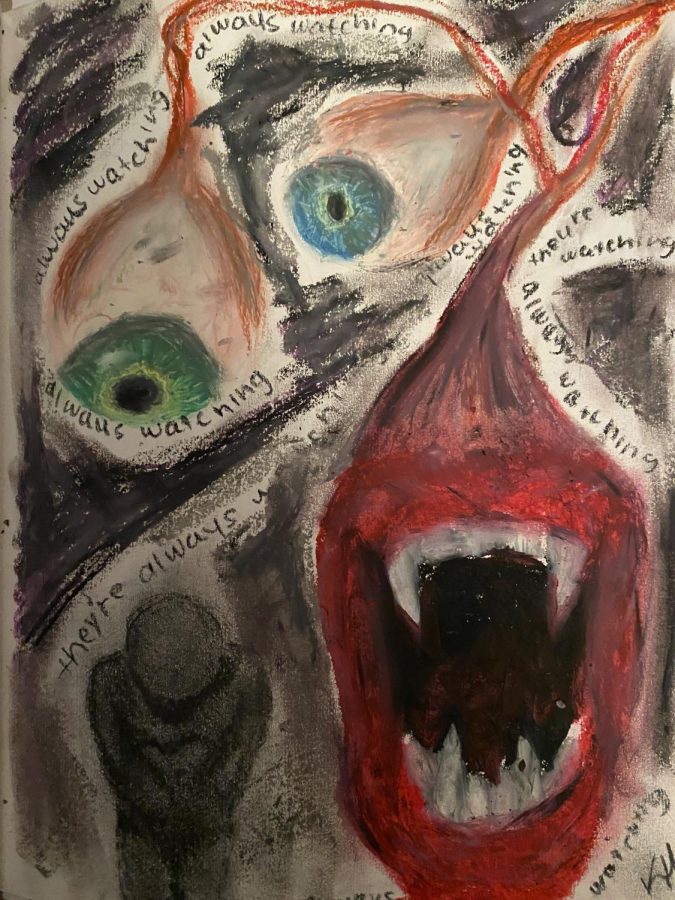



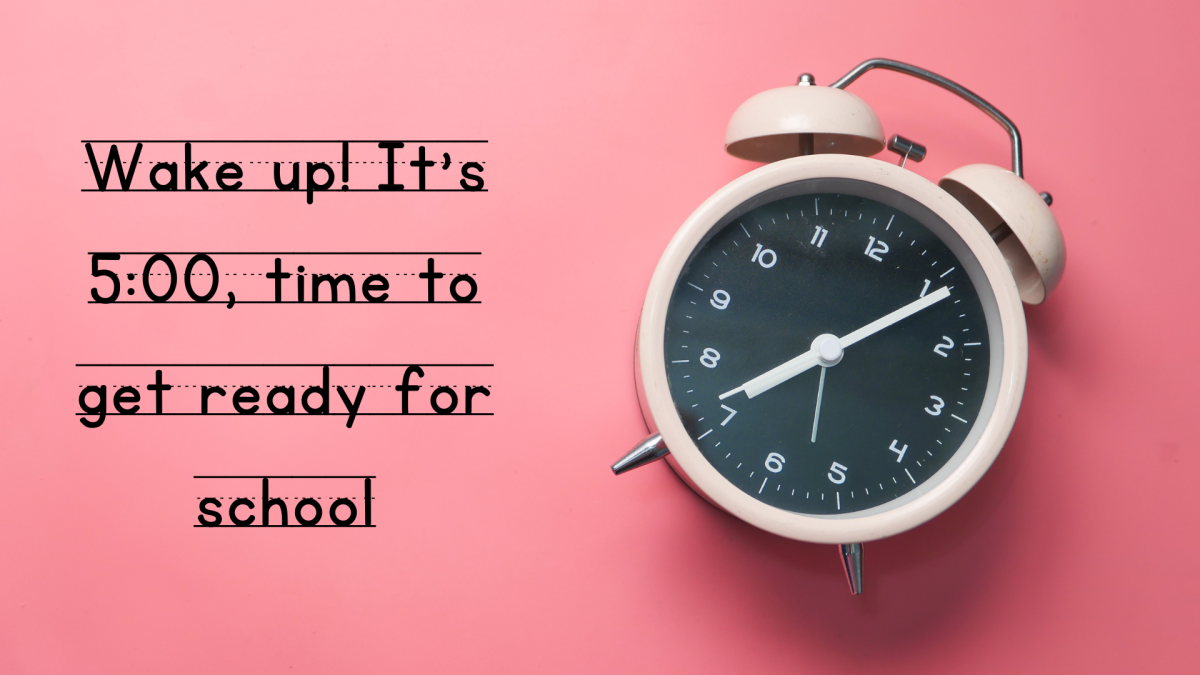


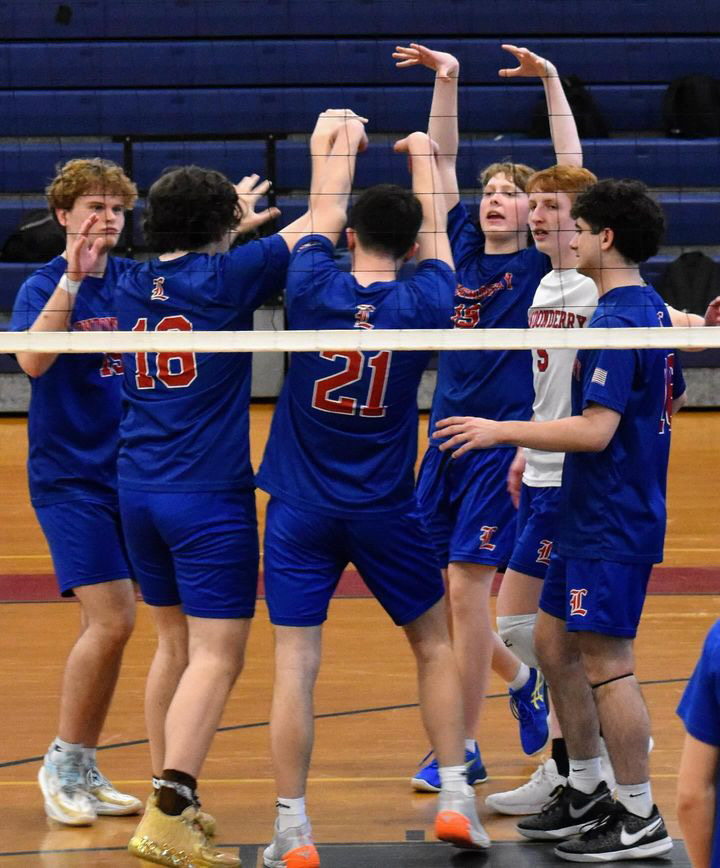


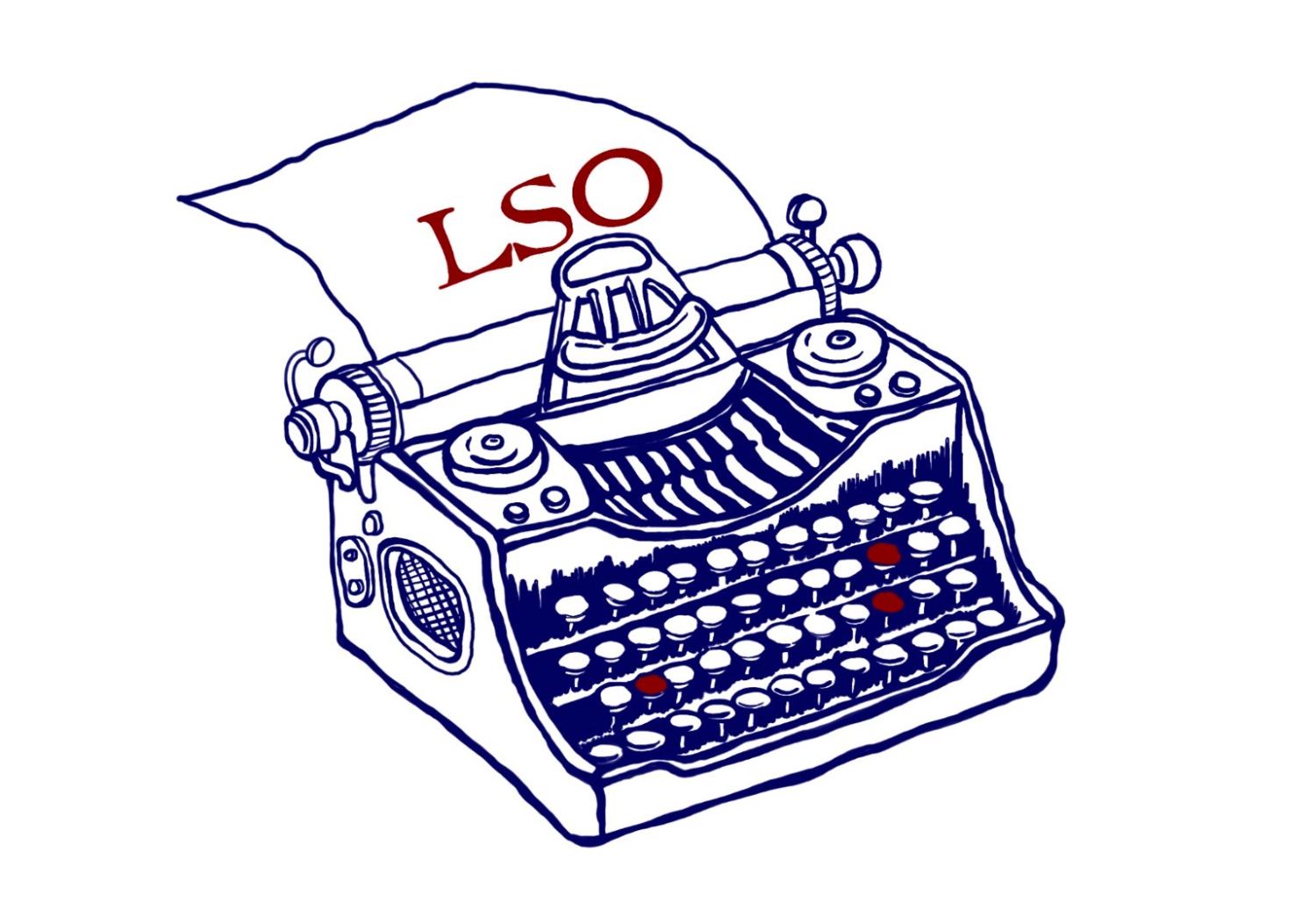
Mario
Feb 9, 2022 at 12:03 am
The Chinese character in the first image is upside down.
Natalie Karlson
Feb 14, 2022 at 12:59 pm
Thank you for being interested in my article.
“A common character to have displayed is “fú”, meaning luck. The character can be displayed upside down, changing the meaning to “pouring out luck” to those who read it.” Here is a website explaining.